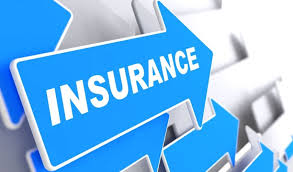Insurance Explained: Understanding the Basics of Coverage and Claims
Introduction: Why Insurance is Essential
The Importance of Insurance: Protecting your health, property, and future from financial risk.
How Insurance Works: Understanding the fundamental principle of pooling risks and spreading financial loss.
Types of Insurance: A breakdown of the major types: health, life, auto, homeowners, disability, and more.
Chapter 1: Health Insurance
What is Health Insurance?: How health insurance helps you cover medical expenses.
Choosing the Right Plan: How to evaluate health insurance options—HMO, PPO, EPO, and high-deductible plans.
Understanding Premiums, Deductibles, and Co-pays: What each term means and how they affect your costs.
Open Enrollment Periods: The best times to enroll in health insurance, including employer-based and individual plans.
Managing Healthcare Costs: Tips on reducing out-of-pocket expenses and using Health Savings Accounts (HSAs).
Chapter 2: Life Insurance
Why You Need Life Insurance: Understanding life insurance as a tool for protecting your family’s financial future.
Types of Life Insurance: The difference between term life and whole life insurance, and which one might be best for you.
How Much Coverage Do You Need?: Estimating your coverage based on dependents, income, and debts.
Choosing a Beneficiary: The importance of designating a clear beneficiary and updating them regularly.
Chapter 3: Auto Insurance
Understanding Auto Insurance: Different types of coverage such as liability, collision, and comprehensive insurance.
How to Choose Auto Insurance: Factors to consider when selecting a policy, such as coverage limits and deductibles.
Saving Money on Auto Insurance: Tips on reducing premiums, including maintaining a clean driving record and bundling policies.
What to Do After an Accident: The claims process, including how to report an accident and what information is needed.
Chapter 4: Homeowners and Renters Insurance
What is Homeowners Insurance?: Protecting your home and personal property from fire, theft, and other disasters.
Types of Coverage: Understanding dwelling, personal property, and liability coverage.
Renters Insurance: How renters insurance can protect your personal belongings and cover liability.
Flood and Earthquake Insurance: What standard homeowners insurance does and does not cover, and when to consider additional policies.
Chapter 5: Disability Insurance
What is Disability Insurance?: How disability insurance helps replace income if you can’t work due to illness or injury.
Short-Term vs. Long-Term Disability: A comparison of the two and how to choose the right coverage.
Employer-Provided vs. Private Disability Insurance: Understanding the difference and how each type affects your benefits.
How Much Disability Insurance Do You Need?: Estimating the right coverage based on your income and expenses.
Chapter 6: Travel Insurance
What is Travel Insurance?: Protecting yourself during travel for things like cancellations, medical emergencies, or lost luggage.
Types of Travel Insurance: Trip cancellation, medical coverage, baggage loss, and more.
How to Choose Travel Insurance: Factors to consider, such as the destination, trip cost, and the length of travel.
When to Buy Travel Insurance: The best times to buy travel insurance and when it might not be necessary.
Chapter 7: Business Insurance
What is Business Insurance?: Protecting your business from financial loss through general liability, property insurance, and other types of coverage.
Types of Business Insurance: An overview of business interruption, workers’ compensation, commercial property insurance, and more.
Choosing Business Insurance: Tailoring your coverage to the specific needs of your business and industry.
Protecting Your Employees: How workers’ compensation insurance works to protect your team and your business.
Chapter 8: The Claims Process
How to File an Insurance Claim: The steps to follow when submitting a claim, whether for health, auto, home, or life insurance.
What Happens After You File?: What to expect during the claims process, from assessment to settlement.
Appealing Denied Claims: How to handle disputes and appeal an insurance company’s decision.
Chapter 9: Understanding Insurance Costs
Factors That Affect Insurance Premiums: How age, location, driving history, and lifestyle affect premiums.
Ways to Lower Insurance Costs: Tips for reducing premiums, such as raising deductibles, shopping around, and bundling policies.
The Role of Deductibles: How choosing a higher deductible can help reduce premium costs, and when it’s appropriate.
How to Compare Insurance Policies: The best way to evaluate coverage options to find the best value.
Chapter 10: The Future of Insurance
Emerging Insurance Trends: How technology, data analytics, and artificial intelligence are transforming the insurance industry.
Telematics and Usage-Based Insurance: The role of technology in driving personalized premiums for auto and health insurance.
The Growth of InsurTech: How digital platforms are making insurance more accessible and efficient.
Climate Change and Insurance: How the growing risks from natural disasters are affecting the future of homeowners and business insurance.
Conclusion: Taking Charge of Your Insurance Needs
Review Your Coverage Regularly: The importance of reassessing your insurance needs as your life circumstances change.
Stay Informed: Understanding your rights and responsibilities when it comes to insurance and claims.
Get Help When You Need It: Seeking guidance from an insurance agent or financial advisor to ensure you have the right coverage.

